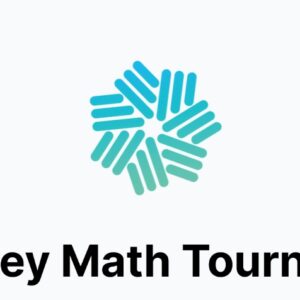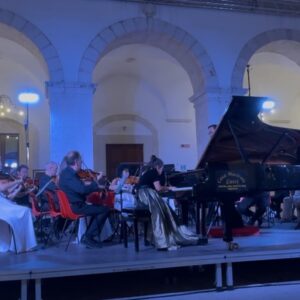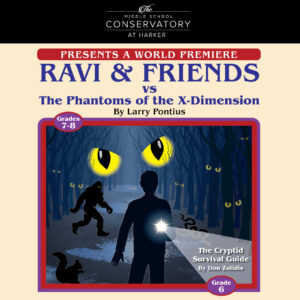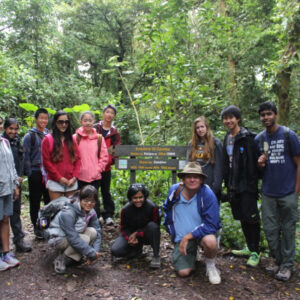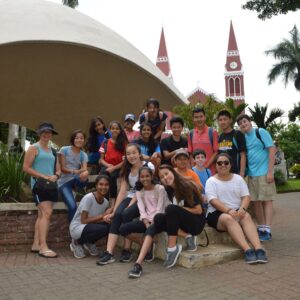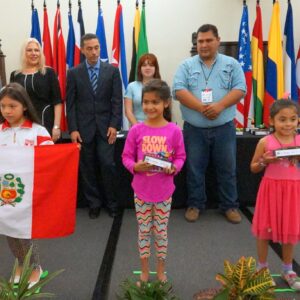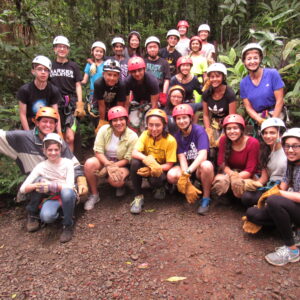An abridged version of this article was originally published in the fall 2012 Harker Quarterly.
By Mark Brada
Editor’s note: Mark Brada teaches upper school physics. He submitted this article after chaperoning Harker’s Costa Rican adventure.
On July 27, 14 Harker students and two teachers left their homes and set out for an adventure in the wilds of Costa Rica. Upper school chemistry teacher Mala Raghavan and I accompanied grade 11 students Adarsh Battu, Allen Cheng, Albert Chu, Tiffany Chu, Nathan Dhablania, Darian Edvalson, Chris Fu, Dennis Moon, Daniel Pak, Shreyas Parthasarathy and Renu Singh and grade 12 students Jonathan Cho, Zoya Khan and Alice Tsui. Upon landing in the Alajuela airport we were met by our guide, Jimmy Trejos, who took us to breakfast at a hotel overlooking the central valley of Costa Rica before boarding a small 20-seat airplane bound for the Nicoya peninsula. From there we took a bus to the Absolute Reserve at Cabo Blanco National Park, one of the most remote sections of the country.
We were also welcomed by professors Milton and Diana Lieberman, who proceeded to give the students a crash course in doing field research in the tropics. This involved lectures, brainstorming sessions, guidied hiking and snorkeling sessions, as well as many hours of collecting and analyzing samples.The students undertook a variety of research projects, including a project to identify and characterize body wall oscines in two species of sea cucumbers and a project that examined the shell selection criteria of marine hermit crabs. After three-and-a-half days of this, it was time to move to a new venue: Caramonal Beach to observe marine turtles and to perform some community service.
We all went with our guides, Nelson and Jimmy, at around 8 p.m. to the beach and were greeted by an olive ridley turtle that had just came up from the water to lay her eggs. Once she finished making her nest and had moved back to the water, Nelson, who is the director of the Caramonal Beach National Wildlife Refuge, dug up the nest and moved the eggs to a location that is safe from egg poachers as well as other predators. The entire experience was both amazing and humbling.
The next morning we headed to the University of Georgia research station in the San Luis Valley below the Monteverde cloud forest. Here the students continued to work on their research projects. Their projects culminated in an evening colloquium where they presented their preliminary research findings to a public audience. Their presentations were incredibly detailed and showed a great deal of insight into the problems that they had investigated while in the country. I was particularly impressed with the questions that the students asked after each presentation, which showed that they not only grasped the other students’ presentations, but had been able to glean the key information and provide helpful feedback to them as well. Overall the night was a resounding success.
The students also enjoyed a great time in the country, including some white water rafting, zip-lining through the forests near Monteverde and taking a chocolate tour in the Sarapiqui region, where we saw a great deal of wildlife. We saw dozens of different species including keel-billed toucans, white-faced monkeys, a caiman and blue jeans poison dart frogs to name just a few. Everyone had a great time on this remarkable trip.

